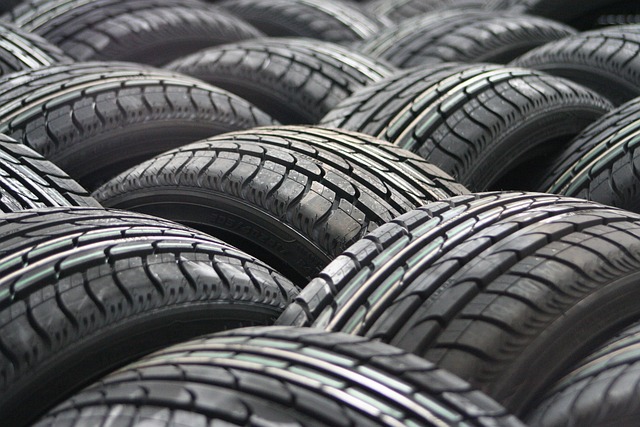Looking to register your car in California? This comprehensive guide walks you through every step, from understanding essential requirements to completing the registration application process. We’ll highlight the importance of VIN verification, detailing what documents you need and how to conduct a thorough check. By following these straightforward steps, you’ll be on your way to securing your vehicle’s registration promptly. Remember, accurate VIN verification is key!
- Understand the Requirements for Car Registration in California
- Gather Necessary Documents for VIN Verification
- Perform a Vehicle Identification Number (VIN) Check
- Complete the Registration Application Process
- Pay the Required Fees and Finalize Registration
Understand the Requirements for Car Registration in California

Before you begin the registration process, it’s crucial to understand the requirements for car registration in California. The state mandates that all vehicles operating on its roads be properly registered and have undergone a vehicle identification number (VIN) verification. This involves checking the VIN accuracy and ensuring the vehicle meets safety standards.
The process includes presenting essential documents such as proof of ownership, current insurance, and valid driver’s licenses. Additionally, for a seamless registration experience in California, considering options like a mobile VIN inspection or verification can be beneficial. These services allow you to complete the necessary VIN check conveniently without visiting a DMV office, saving time and effort.
Gather Necessary Documents for VIN Verification

Before heading to the California Department of Motor Vehicles (DMV), make sure you have all the required documents for a successful VIN (Vehicle Identification Number) verification. This step is crucial as it ensures your car’s history and authenticity during registration. Gather important paperwork such as the title or bill of sale, which proves ownership, along with any applicable registration records from previous states. Additionally, bring along a valid driver’s license or state-issued ID card to establish your identity.
For convenience, many individuals opt for a mobile vin verifier service, allowing them to complete this process remotely. These services offer vin inspections by providing an expert evaluation of your vehicle’s history through the unique VIN number. Alternatively, you can perform a basic vin verification online using official DMV resources, but physical documentation will still be required upon visit.
Perform a Vehicle Identification Number (VIN) Check

Before registering your car in California, it’s crucial to perform a Vehicle Identification Number (VIN) check. This step is essential for ensuring that the vehicle you’re planning to register is legitimate and has not been reported stolen or had its identity altered. A VIN verification helps authorities track vehicles across the state and prevents fraud. You can conduct this vin inspection through various methods, including using an online service or a mobile vin verifier app.
For convenience, many residents opt for a mobile vin inspection. This involves having a professional inspector check your car’s VIN and provide you with a detailed report. Such services are particularly useful as they save time and offer peace of mind. If you choose to conduct the inspection yourself, ensure you have access to the vehicle’s VIN plate, which is typically located on the driver’s side of the dashboard or under the hood. This process will help confirm your car’s history and make the registration process smoother.
Complete the Registration Application Process

After gathering all the necessary documents, it’s time to complete the registration application process with the California Department of Motor Vehicles (DMV). Start by filling out Form DV-140, which is the Application for Title and Registration. This form requires detailed information about your vehicle, including its make, model, year, and VIN (Vehicle Identification Number), which can be easily verified through a mobile vin verifier or by conducting a vin inspection. Ensure all details are accurate to avoid future issues.
Next, submit the completed application along with the required fees and supporting documents, such as proof of insurance and identification. You can typically do this at your local DMV office or online if available in your area. Upon approval, you will receive a registration certificate and license plate, finalizing the process for your new car’s official registration in California.
Pay the Required Fees and Finalize Registration

After submitting your application and relevant documents, the next step is to pay the required fees for car registration in California. The cost will vary depending on several factors, including the type of vehicle, its age, and whether it’s a new or used car. You can typically make the payment online through the DMV website or at a local California DMV office. Once your payment is processed, you’ll receive confirmation and official registration documents.
Before finalizing the registration process, ensure that you’ve completed the vin verification step. This involves a vin inspection to validate the vehicle’s information, which can be done conveniently with a mobile vin verification service. By providing accurate data, you streamline the registration, ensuring a smooth experience and avoiding any potential delays or issues in the future.
Registering a car in California involves understanding specific requirements, gathering essential documents for VIN verification, completing an application process, and paying relevant fees. By diligently navigating these steps, you can ensure your vehicle is legally registered and ready to hit the bustling California roads. Remember, proper registration is crucial for safety, insurance, and compliance with state laws.
